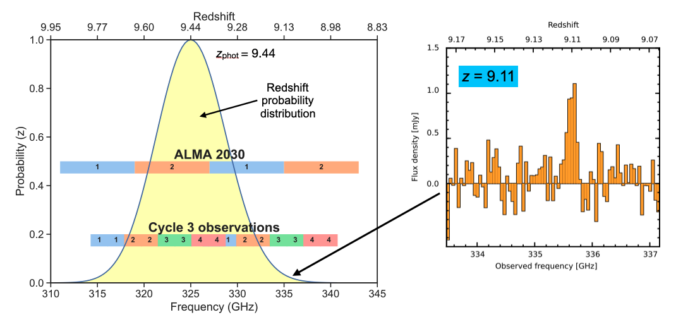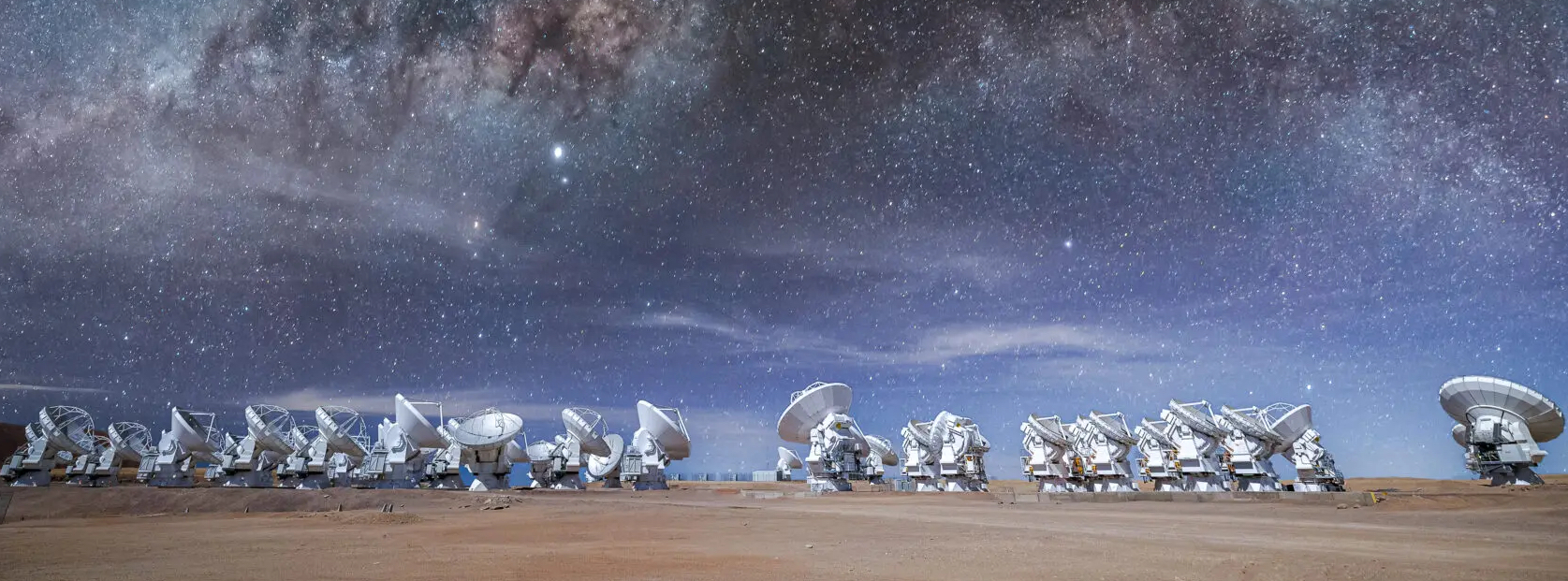WSU Science
This text is based on the ALMA Memo 621.
The Wideband Sensitivity Update (WSU) represents a transformative leap in millimeter and submillimeter astronomy. This initiative is the top priority of the ALMA2030 Development Roadmap and will eventually quadruple ALMA's bandwidth, significantly boosting its sensitivity for a wide range of astronomical observations. The upgrade will impact all future observations, including continuum and spectral line studies, and provide significant advancements for high-resolution spectral data.
The WSU will enable faster and more detailed imaging, improving our ability to study everything from protoplanetary disks to distant galaxies. This initiative will allow scientists to explore cosmic origins with unprecedented precision by upgrading receivers, correlators, and digital electronics, opening new possibilities in studying planet formation, chemical evolution, and galaxy formation. The WSU is set to strengthen ALMA’s position as a leading facility for astronomical discovery, maximizing synergies with other observatories across the electromagnetic spectrum.
Goals
Based on the assessment of the ALMA International Visiting Committee in 2019, the initial top-level science goals of the ALMA Project were essentially achieved at that time. Therefore, it was appropriate to start planning towards addressing the fundamental science drivers identified for ALMA2030.
.

The primary scientific goal of WSU is to significantly advance our understanding of planet formation. ALMA has already revolutionized this field by revealing stunning images of protoplanetary disks, where planets form. With the WSU, scientists will be able to study the chemical composition and physical structures of these disks in much greater detail. The expanded bandwidth will allow for simultaneous observations of multiple molecular transitions, offering a comprehensive view of how gases and dust interact to form planets. This upgrade will shed new light on the critical processes shaping the early stages of planet formation and their implications for planetary systems.
.
Another key science focus is tracing the origins of chemical complexity in the Universe. ALMA’s enhanced sensitivity and spectral resolution will enable more detailed studies of molecular clouds and star-forming regions where complex organic molecules form. The WSU will allow astronomers to build large samples of interstellar clouds and protostars, studying their chemical compositions in unprecedented detail. By detecting more molecular species simultaneously, researchers will better understand how chemical complexity evolves from simple molecules to more complex structures that eventually contribute to developing life-supporting environments around stars.

.

Finally, the WSU will deepen our knowledge of the formation and evolution of galaxies. By improving ALMA’s ability to observe distant galaxies, especially at high redshift, the upgrade will help astronomers probe the early universe, uncovering how the first galaxies formed and evolved. The increased spectral grasp and sensitivity will also allow for more efficient surveys of galaxy properties across cosmic time. These improvements will make it possible to conduct comprehensive studies of galaxy dynamics, star formation, and the interaction of galaxies with their environments, offering fresh insights into the universe’s history and the mechanisms driving galaxy formation.
.
Science Case Examples



